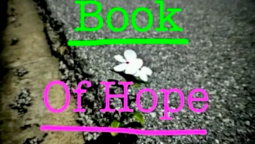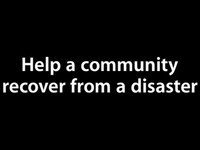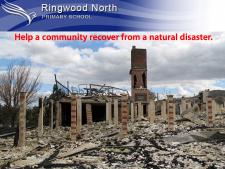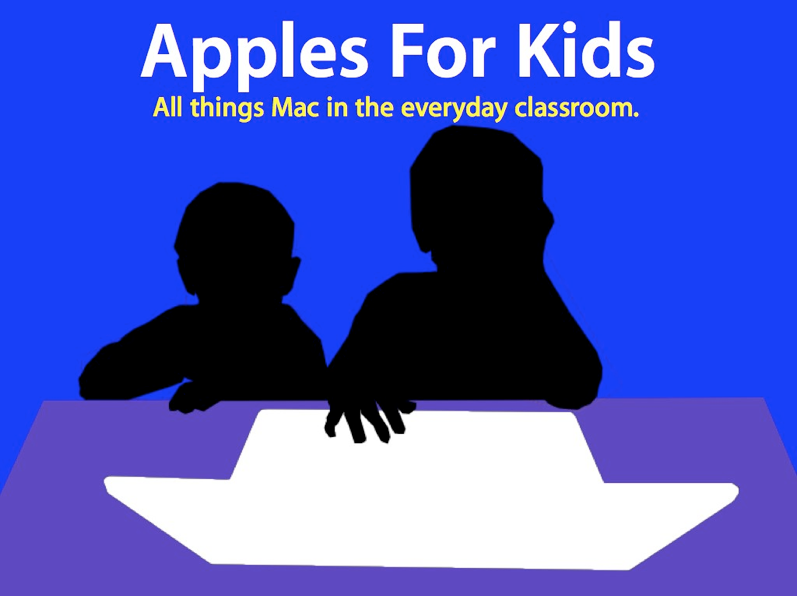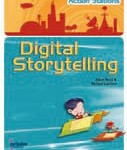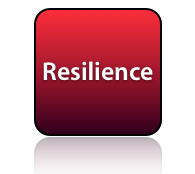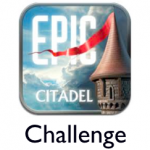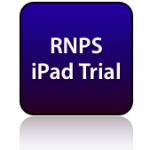Posts tagged CBL
Challenge Based Learning - The ‘Book Of Hope’
Jun 22nd
Challenge Based Learning - The ‘Book Of Hope’.
Congratulations to our ‘Book of Hope’ group from our ‘Resilience’ unit, who have just had their solutions and reflection published on Apple’s official Challenge Based Learning website.
Several groups joined to create a ‘Book Of Hope’ made up of inspirational text and moving images created by the children. This piece of art was sent to our friends at Kaiapoi Borough School in New Zealand.
Jamestown ES, another school in the USA involved in our CBL program has also contributed to our challenge. They have offered their own solution titled - ‘Jamestown CARES for Japan.’ See their great work here - http://cbl.apple.com/solution/view/42
We really are part of a global community!
What Does Challenge Based Learning Look Like?
Jun 17th
IMPORTANT: Please read this post and take a moment to leave a comment and share where in the world you are from. We would like our students to share in the ways their work has impacted upon other communities around the globe. Thank you.
So what does Challenge Based Learning look like?
There is a great deal of interest surrounding Apple’s Challenge Based Learning program due to its potential for creating authentic learning experiences for students. But what is it really? How is it structured? What are the benefits? How do you go about it?
Representatives from Ringwood North Primary School in Melbourne, Australia were lucky enough to be invited to Dallas, Texas in January 2011 to attend a Challenge Based Learning Project with schools from the USA and Canada. To be able to collaborate and work with so many talented and dedicated educators was an amazing experience. But this was only the beginning of our journey.
We were faced with implementing a new program that we were still coming to grips with, a program that needed to cater for 138 Year 5/6 students, kicking off at the very beginning of a school year, a new teaching team and a new building. While waiting for leases and equipment to be finalized, this project was completed without desktop computers or projectors/screens. Fortunately our students have their own iPads - so this really was testing what was possible with these new devices.
We decided to focus on the Big Idea of ‘Resilience’ and after much questioning, came to the Essential Question of ‘How do communities overcome adversity?’ With so many devastating natural distasters occurring in Australia at the time, we felt it was important that our students investigate this topic. In a time of great adversity, the human spirit often shines, and out of something horrible, there are stories and examples of strength and bravery. The final step was to issue a challenge, a statement - ‘Help a community recover from a natural disaster.’
From this point, student groups brainstormed ‘Guiding Questions’ and developed activities to investigate the answers. They then presented their findings to one another.
We setup collaborative working spaces in Edmodo, which was a vital ingredient. This space allowed our students to easily collaborate, share ideas, links, resources and ask one another, not just the teachers, for help. This allowed them to work on the projects when they got the chance to. The way our students are now working within this secure space is amazing. They are taking care with their spelling and punctuation, while being supportive, resourceful and creative - all the while learning about the etiquette of working in a digital environment.
Students then present a number of proposals for their solutions. We set up an interview space where they would run through their ideas, how they were going to measure their successes and what were the steps they needed to work on next. We used Google Docs for sharing these solutions with the students and other groups to ensure we knew where all of the groups were at.
Online galleries were used to share images and videos. Teachers and students became experts at gathering a variety of data, from work samples via the student ePortfolio or website they created, to photos and videos of student learning in progress, to audio and video reflections by the students.
There was such a variety of solutions embarked upon, it was truly inspiring. The students had creative and exciting ways of tackling the challenge - most of which we as teachers would not have come up with or thought possible. Digital books, websites, friendship bracelets, murals, artworks, tree planting ceremonies, bake sales, and book collections were just some of the solutions the students were responsible for.
Once their solutions were implemented, the students began to piece together the evidence of their learning and their experiences to create reflections on their content, process and product.
The key to the project is the questioning and investigation that takes place prior to any solution being implemented. The process is just as important as the content and any product that is produced. Getting our students to reflect along the way and not just at the end of the challenge was also an important part of their projects.
Another key focus is on challenging and supporting the students, getting them to take responsibility and being aware that they may not reach their ultimate goal. This in itself is a lesson to be learnt. If we didn’t complete our challenge, why not? What needs to be done next time to ensure it is achieved?
We have created this film as a snapshot of our journey over the first term through our involvement with Apple’s Challenge Based Learning Pilot Program. This movie was a part of the requirement of being in the program, but has proved to be an amazing snippet of how our students approached this task. It does not have every challenge covered, as it would have turned into a feature film! But hopefully, even with its shaky camera work and rough edges (which was captured and collected by both students and teachers), it manages to capture the spirit of what CBL is all about.
We are so proud of the way our students approached this challenge, and the way in which they have become more aware of life beyond themselves. Their collaborative work, leadership skills and desire to succeed was inspiring. More importantly, it has been the fact they now realise they can do something to help those more unfortunate than themselves, even though they are still in primary school.
Congratulations to our talented students, dedicated teachers and supportive parent community for their enthusiasm and support with this program.
Kids can make a difference!
Technical Stuff:
I have had a number of people ask about the actual making of the movie. Out of interest, the movie was made using flip cameras, iPhone , and a Sony HD camera, the video was edited in iMovie 11 and the music recorded with Garageband. The last music track was my first go at recording real instruments in Garageband on the iPad. Using an iRig, I recorded 4 guitar tracks, a bass guitar track, and then added the drums. The last track took about 20 minutes to finish. Love the iPad!
Scooping the web - Challenge Based Learning Resources
Jun 5th
Challenge Based Learning Resources | Scoop.it.
Several months ago I came across a program still in beta called ‘Scoop.it.’ Rather than shout out straight away, I thought I would give it some time to see if I continue using the program. After several months, and a few improvements later, I am still a keen user of Scoop.it!
So what is it? Basically, it is a form of visual bookmarking tool, but that is really underselling its variety of uses. The social nature of this program and its extensive search functions is what sets this tool apart from others.
Scoop.it allows you to create a ‘site’ where you can store links to resources. It has the capacity to search key terms from social media sites such as Twitter, Youtube, Digg to name a few, which can then be easily added to your page. It also allows you to ‘follow’ and other people’s ‘scoops’ and even offer recommendations for their page.
One of the big advantages for me is the visual nature of the page. You can easily insert images to represent each site, add a description of the resource and choose the size and layout of the link in your ‘site.’
I have been using Scoop.it for a variety of situations;
- gathering resources shared from the tweet stream when in a conferences. You can easily ‘scoop’ links from hashtags and add them to a site you create for the conference. You can then share this collection of links with everyone. Better yet, other Scoop.it members could even add to your page! Rather than all having our own collection of links, we can share and recommend links to one central place
- creating visual bookmarks for our primary school students. One link added to our school website and there is a huge library of links for the students and teachers to explore. The visual nature of it makes it easy, even for our Preps, to find what they are after
- creating a library of iPad apps for our iPad trial at school
- creating collections of resources for further reading and research
- sharing links as I post them to Twitter and now even WordPress
- following other people’s Sccops
I have linked this page to my library of ‘Challenge Based Resources’ that I have started to collect so as to give you an idea of what it can do. I look forward to sharing links with you, and receiving some recommendations from you, if you join Scoop.it!
Challenge Based Learning - Help a community recover from a disaster.
May 22nd
Challenge Based Learning - Help a community recover from a disaster..
Since our official briefing in January in Dallas as a part of the Challenge Based Learning program with Apple, CBL has had a profound affect on life at Ringwood North Primary School. Challenge Based Learning has not only brought all forms of technology into the classroom in a relevant and meaningful way, but has helped our students, teachers and school community to understand ‘the bigger picture.’ That there is more to life than just ourselves, how lucky we are to have what we take for granted everyday and the impact a small gesture can have on people in other parts of the world have been lessons we have learned that transcend any progression point devised by our curriculum.
I am looking forward to sharing more in-depth reflections over the coming weeks as our final solutions are uploaded to the Apple website, but I wanted to share the unit of work we devised at the commencement of this challenge. It almost seems surreal to think where we were at at the beginning and how far we have come as a community throughout this challenge.
I hope you find our Big Idea, Essential Questions and examples of Guiding Questions and Activities useful. There is also a ‘proposal video’ that aims to grab the students’ attention and invite them to take on the challenge. We are very proud of our work and would love to hear from any schools that use the outline to take on the challenge.
Good luck!
Apples For Kids - Episode 8
Mar 26th
Apples For Kids is back! Episode 8 is done. Challenge Based Learning, iPads, Apps
Challenge Based Learning - More Than Just A Unit Of Work
Mar 14th
The Earth continues to wreak havoc and leave trails of destruction all over the globe. The graphic images being shared over the Internet, TV and newspapers of the Japanese earthquakes and tsunami are confronting and upsetting.
While we are now well and truly into developing solutions to our CBL focus on ‘Helping a community recover from a natural disaster,‘ with plenty of experiences about the process and learning to share, for the moment the only thing to say that seems appropriate is this is without a doubt the most important educational experience I have been involved with.
Our students’ and staff’s connection with this topic has made the recent disasters in Australia, New Zealand & Japan hit home even more. Our students are genuinely moved and determined to help make a difference, and I can see several groups changing their focus to see what they can do to help communities affected by the recent disaster.
Hearing their ideas, seeing their enthusiasm and following their progress has reiterated to me that putting in the extra effort to work through the initial challenges and concerns is really worth it.
Most groups will get there, some will not. But there is no doubt every student has been already been affected by this challenge, and hopefully buoyed by the knowledge they can do something - no matter how small.
Taking the ‘Challenge’ To Texas!
Jan 19th
Next week, I, along with 2 other staff members from my school, have the honour of attending Apple’s Challenge Based Learning Project in Dallas, Texas. We have been selected as representatives from Australia to attend the workshop, which is bringing in educators from all over the world to participate in this program.
The program aims to explore the role of Challenge Based Learning with schools collaborating to develop units of work that will be implemented when we resume, and will be reviewed upon completion of the program. Findings of the report will no doubt be shared by Apple via the website and/or iTunes.
This is a a huge privilege for our school, and hopefully reflects the quality work we have been implementing in regards to Challenge Based Learning in conjunction with our 1:1 iPad program for our 130 Years 5/6 students. With so much success in the last few months of the year, I have seen the impact CBL has had on our students as they engage in meaningful tasks that promote curiousity and differentiation.
I look forward to sharing ideas and learning from other enthusiastic educators from other parts of the world on this program, and hopefully updating you on how it is all going.
Stay tuned!

